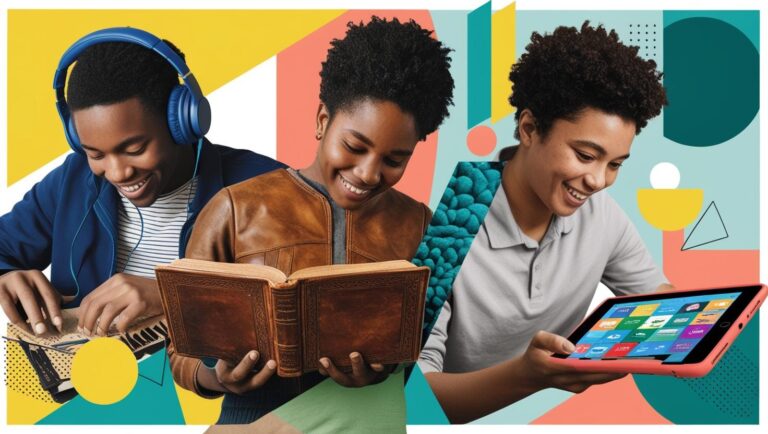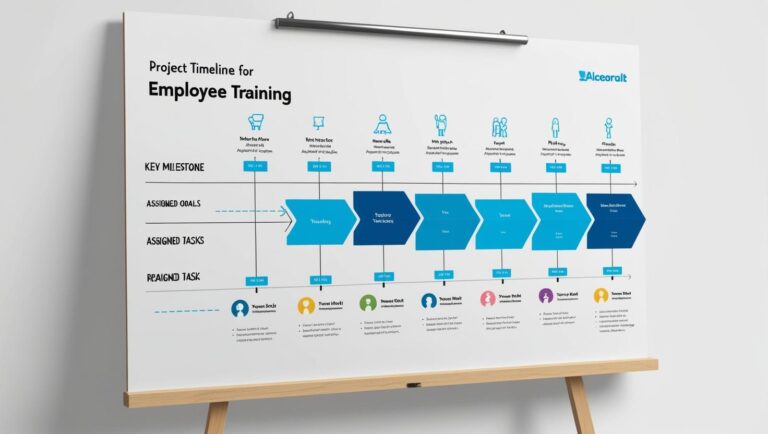How to Build a Training Plan That Works for Visual, Auditory, and Kinesthetic Learners
If you’ve ever delivered a training session where everyone nodded along, smiled politely, and seemed to “get it” — only to find out the next day that nobody remembered anything — you’ve experienced a common training problem. It’s not your presentation skills, and it’s not your employees’ attention spans. The issue often comes down to learning styles.
People absorb information differently. Some learn best by seeing, others by hearing, and others by doing. And if your training doesn’t account for these differences, even the most important information can get lost in translation.
The good news is that you don’t need to create entirely separate training programs for each learning style. By understanding how visual, auditory, and kinesthetic learners operate, you can design a blended training plan that engages everyone, reinforces learning, and increases retention — all without overcomplicating your process.
Let’s break it down.
Understanding the Three Primary Learning Styles
The first step in creating a training plan that sticks is understanding the three main ways people learn. In training circles, these are often referred to as VAK: Visual, Auditory, and Kinesthetic. Most people are a blend of these styles, but usually, one dominates when learning something new.
Visual learners absorb information best through images, diagrams, flowcharts, and colour-coded materials. They tend to remember what they see and are often the ones sketching diagrams or taking notes in visual ways.
Auditory learners prefer to hear information, engage in discussions, and explain concepts aloud. They retain knowledge through listening and speaking. If someone asks a lot of questions or likes group discussions, chances are they’re auditory learners.
Kinesthetic learners need to physically engage with the material. They learn by doing, touching, experimenting, and practising tasks themselves. These learners often struggle to remember instructions unless they can immediately put them into action.
Recognising these learning styles is the foundation of a training plan that doesn’t leave anyone behind.
Why Blended Learning Matters
Blended learning — incorporating all three learning styles into a single session — isn’t just a nice-to-have. It’s essential for ensuring knowledge actually sticks.
Consider this example from a retail environment: your team needs to learn how to handle customer complaints effectively.
For visual learners, a flowchart illustrating the steps of the complaint resolution process helps them see the sequence clearly.
Auditory learners benefit from role-playing a conversation with a “difficult customer,” allowing them to hear and practise the dialogue.
Kinesthetic learners need the chance to handle a mock complaint themselves and reflect on the outcome.
All three approaches cover the same topic, but each learner accesses it in the way they retain best. The result is higher engagement, faster learning, and fewer mistakes on the job.
Designing Your Training Around VAK
A practical way to plan your sessions is to use a VAK framework for each topic. You can create a simple template that ensures every training session hits all three learning styles without becoming overwhelming.
For instance, for a session on inventory management:
Explain the task: Visual learners get a diagram of the stock-taking process; auditory learners hear a step-by-step explanation; kinesthetic learners watch a demonstration and then try it themselves.
Demonstrate the process: Use videos or live demonstrations for visual learners, talk through the process for auditory learners, and guide kinesthetic learners to practise in a controlled environment.
Practice and reinforce: Provide checklists, SOPs, or visual reminders for visual learners; schedule group debriefs for auditory learners; and allow kinesthetic learners to repeat the task in real-time scenarios.
This structure ensures that no matter the dominant learning style, every employee leaves the session with a clear understanding of the material.
Observing and Letting Learners Choose
One of the easiest ways to make training effective is to let learners engage in the way that suits them best. You don’t need to guess their style — you can observe or ask.
Visual learners often take notes, sketch diagrams, or highlight key points.
Auditory learners tend to ask clarifying questions, discuss scenarios, and repeat instructions aloud.
Kinesthetic learners want to jump in immediately, try the process hands-on, or demonstrate their understanding physically.
You can even offer choices during training: “Would you like to watch a demonstration, listen to an example, or try it yourself first?” This empowers employees, increases engagement, and helps them retain information more effectively.
Tools and Techniques for Every Learning Style
You don’t need an expensive Learning Management System (LMS) to build engaging, multi-style training. Everyday tools and simple techniques can work just as well.
For visual learners:
Canva posters or infographics summarising procedures
Whiteboards with diagrams during live sessions
Step-by-step visual guides or flowcharts
Colour-coded process documentation
For auditory learners:
Voice notes summarising instructions
Group calls or team huddles to discuss key points
Scenario-based discussions or role-plays
Podcasts or short audio clips covering important processes
For kinesthetic learners:
Job shadowing or hands-on practice sessions
Interactive role-plays or simulations
Task-based exercises with real equipment or systems
Guided “learning by doing” exercises
Combining these tools doesn’t require extra budget — it requires intentional design. The more deliberate you are in integrating multiple learning modalities, the more effective your training becomes.
Common Mistakes to Avoid
Even with awareness of learning styles, training can fail if these mistakes are made:
Focusing only on one style: Many trainers assume everyone learns best through visual slides or written instructions. This alienates auditory and kinesthetic learners.
Overloading content: Bombarding learners with too much information at once overwhelms all learning types. Break training into digestible chunks.
Skipping reinforcement: Repetition in different formats is essential. Visual learners need reminders, auditory learners need discussion, and kinesthetic learners need repeated practice.
Neglecting feedback: Always ask learners which method helped them understand best. Continuous improvement is key.
Real-Life Example: Small Business Application
Imagine a small cafe onboarding new baristas. The manager uses the VAK approach:
Visual: A poster shows each step of espresso preparation, from grinding beans to steaming milk.
Auditory: During a team huddle, the manager explains the process verbally and answers questions.
Kinesthetic: Each trainee makes drinks under supervision, practising the process and receiving immediate feedback.
After a week, the baristas aren’t just able to make coffee — they understand why each step matters, improving consistency and service quality. The same principles apply to customer service, inventory management, sales techniques, or administrative processes.
Tracking Success
To know if your training plan is working, you need measurable outcomes. These might include:
Quicker onboarding times
Fewer mistakes in task execution
Improved customer satisfaction scores
Employee confidence in performing new tasks
Use observation, quizzes, peer feedback, and follow-up practice sessions to track understanding. Revisiting the material in multiple formats reinforces learning and helps employees internalise it.
Scaling Your VAK Approach
Even small businesses can scale their training without losing its effectiveness. Once you’ve mapped the learning styles of your team:
Create template-based training kits that combine visual guides, discussion scripts, and hands-on exercises.
Document processes in all three formats so new hires can self-select the method that works for them.
Encourage peer-led sessions, where experienced employees teach others using their preferred learning style.
This approach ensures knowledge spreads efficiently, retention increases, and new hires can ramp up quickly — all while keeping training engaging and consistent.
Final Thoughts
Training isn’t just about delivering information. It’s about ensuring that information sticks. Understanding visual, auditory, and kinesthetic learning styles transforms your training from a generic lecture into a tailored experience that resonates with every team member.
Blended learning isn’t a luxury or corporate fluff. It’s practical sense for small businesses. You don’t need high-tech platforms or fancy materials — just clarity, structure, and awareness of how your team learns.
By designing training that reaches all three types of learners, you not only increase skill retention and workplace competence, but you also boost confidence, engagement, and morale. Employees feel understood and capable, and your business benefits from a more skilled, adaptable, and cohesive team.
When you invest in training that works, you aren’t just teaching a skill — you’re building a culture of learning, collaboration, and continuous improvement.
The next time you plan a session, remember: your goal isn’t to deliver information. Your goal is to make sure everyone learns, retains, and applies it. And with a well-designed VAK-based plan, you can do that efficiently, effectively, and inclusively.



